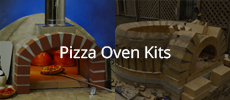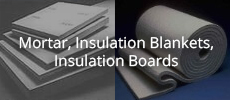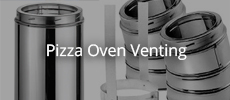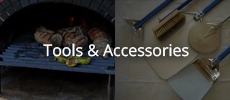Here in the UK we have stringent building regulations regarding solid fuel heating appliances (boilers, stoves, fireplaces etc). These regs have evolved over the years to make sure the chimney / flue is constructed safely. Here the thinking behind the regs comes from years of people and appliances burning bitumus coal, coke and wet timber.
As most of the appliances slow burn the fuel in the mistaken belief that it lasts longer a considerable amount of un burnt gasses and moisture are admitted into the chimney / flue system and the out side environment. If the un burnt gasses and moisture cool before leaving the chimney / flue system they will turn in to a corrosive liquid that doesn?t do the chimney / flue / system any favourers.
With a wood-fired oven or masonry heater the burning of the fuel is fast and furious thus capturing most of the calorific value of the fuel within the oven / heater and emitting very little or in most cases no smoke and un burnt gasses. To be able to burn wood in the way above it must be dry.
So what I am getting at is that the requirements for a chimney / flue for a wood-fired oven is quite different than the solid fuel appliances that the regs were drawn up for. In my experience here in the UK we have to abide by the regs when applying for planning etc, however, often in conversation with the relevant authorities commonsense can prevail in the end.
Where planning / permits aren?t required work on the principle that the chimney / flue is only used for as a chimney / flue for part of the baking / cooking period, you don?t want to set anything on fire so use common sense as to the termination of the chimney / flue, and last don?t upset the folks next door by positioning the chimney flue where it will cause a nuisance.
Alf
As most of the appliances slow burn the fuel in the mistaken belief that it lasts longer a considerable amount of un burnt gasses and moisture are admitted into the chimney / flue system and the out side environment. If the un burnt gasses and moisture cool before leaving the chimney / flue system they will turn in to a corrosive liquid that doesn?t do the chimney / flue / system any favourers.
With a wood-fired oven or masonry heater the burning of the fuel is fast and furious thus capturing most of the calorific value of the fuel within the oven / heater and emitting very little or in most cases no smoke and un burnt gasses. To be able to burn wood in the way above it must be dry.
So what I am getting at is that the requirements for a chimney / flue for a wood-fired oven is quite different than the solid fuel appliances that the regs were drawn up for. In my experience here in the UK we have to abide by the regs when applying for planning etc, however, often in conversation with the relevant authorities commonsense can prevail in the end.
Where planning / permits aren?t required work on the principle that the chimney / flue is only used for as a chimney / flue for part of the baking / cooking period, you don?t want to set anything on fire so use common sense as to the termination of the chimney / flue, and last don?t upset the folks next door by positioning the chimney flue where it will cause a nuisance.
Alf






Comment